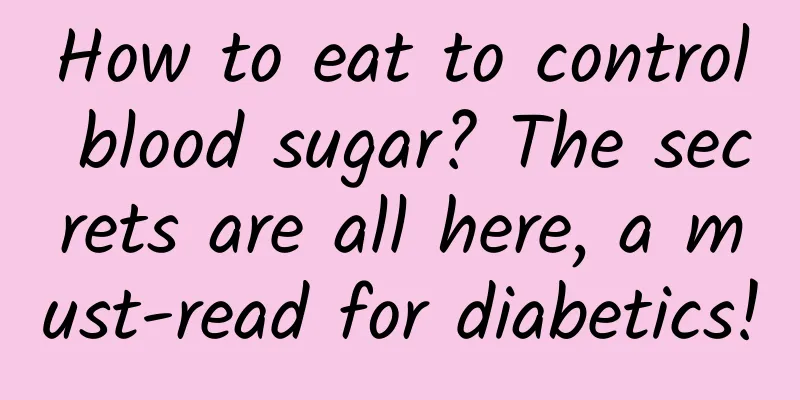Have you avoided these "pitfalls" in the use of inhalers?

|
This is the 3511th article of Da Yi Xiao Hu It is autumn and winter again. The weather is changeable, the temperature difference between day and night becomes larger, and the air is dry. It is a high-incidence period for respiratory diseases. Many factors will also lead to a decrease in human respiratory resistance. Some "old patients" such as asthma and chronic obstructive pulmonary disease are most likely to suffer from respiratory diseases. Chronic airway diseases represented by COPD and asthma are a major challenge for disease prevention and control in my country at this stage, and inhalation therapy is the first-line basic treatment for chronic airway diseases. Compared with oral and intravenous administration, inhalation therapy drugs act directly on the lungs, with the advantages of rapid onset, good efficacy and good safety, and have an irreplaceable clinical position for systemic medication. Inhalation of drugs through various devices has become a common treatment for chronic airway diseases. For patients in the stable stage, portable inhalation devices pre-loaded with drugs are more convenient for patients to use outside the hospital. Common inhalation devices in clinical practice mainly include pressurized metered dose inhalers, dry powder inhalers, soft mist inhalers and small-volume nebulizers. However, many patients do not master the device usage skills and medication precautions instructed by doctors and pharmacists, which often leads to poor treatment effects, unnecessary drug waste and even adverse drug reactions. So what are the pitfalls in the use of inhalers that we need to avoid? Let's find out together! Common types of incorrect operation of inhalation devices Misconceptions about inhalants 01 × They believe that some drugs contain hormones and are overly concerned about side effects, which leads to less medication, unauthorized discontinuation of medication, and irregular medication use; 02 × I felt nothing after inhaling and thought there was no drug in the device; √ Some inhalation devices contain a very small dose of powder per inhalation, and you may not feel it when inhaling. However, as long as you follow the correct steps, you can be sure that you have inhaled the required dose. 03 × The number on the indicator window has reached 0, but there is still sound when you shake it, which means there is still medicine left, so continue to use it; √ At this time, the sound heard when shaking the inhaler is not produced by the medicine, but by the desiccant, which should be discarded. 04 × The doctor prescribed two inhalers for me, but I used them sparingly, only one a day; √ For COPD patients with more severe symptoms, two inhalers are often needed in combination, usually ICS/LABA combined with LAMA. These two drugs must be inhaled on time every day to achieve the best therapeutic effect. 05 × Do not rinse your mouth or swallow mouthwash after use; √ The drugs in inhalers often contain hormone components. If you do not rinse your mouth in time after inhalation, it is easy to cause fungal infection in the oropharynx. If the mouthwash is swallowed, the hormone will cause side effects due to long-term chronic stimulation after systemic absorption. The correct method should be: rinse your mouth 5-6 times after inhalation, and rinse deeply, so that there will be no local adverse reactions during long-term use. Being able to correctly operate the inhalation device and inhale the drug at a fixed time and in a fixed amount is the basis for ensuring the efficacy. However, in actual use, patients will encounter many other problems, such as applying the drug to the device, how big the mouthpiece should be, the coordination of compression and inhalation, etc. So since there are so many "pitfalls", how do I know if I have avoided them? A. When you use the inhaler for the first time or change the inhaler, please seek professional guidance from your doctor or pharmacist; B. If you have any questions about the use of inhalers, please bring your own inhaler and go to the hospital's cough and asthma medication service clinic for consultation and ask the full-time pharmacist for a professional evaluation. References: 1. Chinese expert consensus on the standardized use of inhalation devices for stable chronic airway diseases[J]. Chinese Journal of Tuberculosis and Respiratory Diseases, 2019, 42(4): 241-253. 2. Guidelines for the diagnosis and treatment of chronic obstructive pulmonary disease (2021 revised edition)[J]. Chinese Journal of Tuberculosis and Respiratory Diseases, 2021, 44(3): 170-205. 3.2021 GOLD Global Initiative for Chronic Obstructive Lung Disease: Global Strategy for Diagnosis, Treatment and Prevention of COPD. 4.Global Initiative for Asthma (GINA) Strategy 2021 - Executive Summary and Rationale for Key Changes[J]. Am J Respir Crit Care Med. 2021 Oct 18. Author: The First Affiliated Hospital of Zhejiang Chinese Medical University Zhang Jianjun Zhou Linshui Wang Jianping |
<<: Why do doctors also urge people to get married? (Part 2)
Recommend
What are the dietary supplements after miscarriage?
Today's society is more open, and people have...
How long after giving birth can I have sex?
Caesarean section is a common method of pregnancy...
How to avoid getting drunk easily? What to eat before drinking to avoid getting drunk easily when there is no hangover medicine
What to eat before drinking to prevent getting dr...
What are the advantages and disadvantages of autologous fat breast augmentation?
In life, the most attractive part of women's ...
What causes women's breasts to be large?
For a woman, breasts not only have the function o...
How long does it take for cervical erosion of the third degree to turn into cancer?
Cervical erosion is one of the most common gyneco...
How to choose a contraceptive method
There are many ways of contraception and you can ...
The secret of a woman's uterus
The uterus is a small garden inside the female bo...
Can I use a facial mask when I am pregnant?
Women love beauty at all times. Even when they ar...
Sudden pain on the side of one breast
In real life, many women ignore breast pain becau...
Beware of cardiovascular and cerebrovascular diseases in winter and remember these magic weapons to prevent them
As winter approaches, the weather changes signifi...
What does the hymen look like?
In fact, the broken hymen is not a layer of membr...
How to perform B-ultrasound examination of breast nodules?
Generally speaking, it is very common to do B-ult...
What are the food taboos for vaginitis
The problem of vaginitis is a type of female gyne...
Why does the skin turn yellow after giving birth?
Many women will have a yellow face after giving b...









